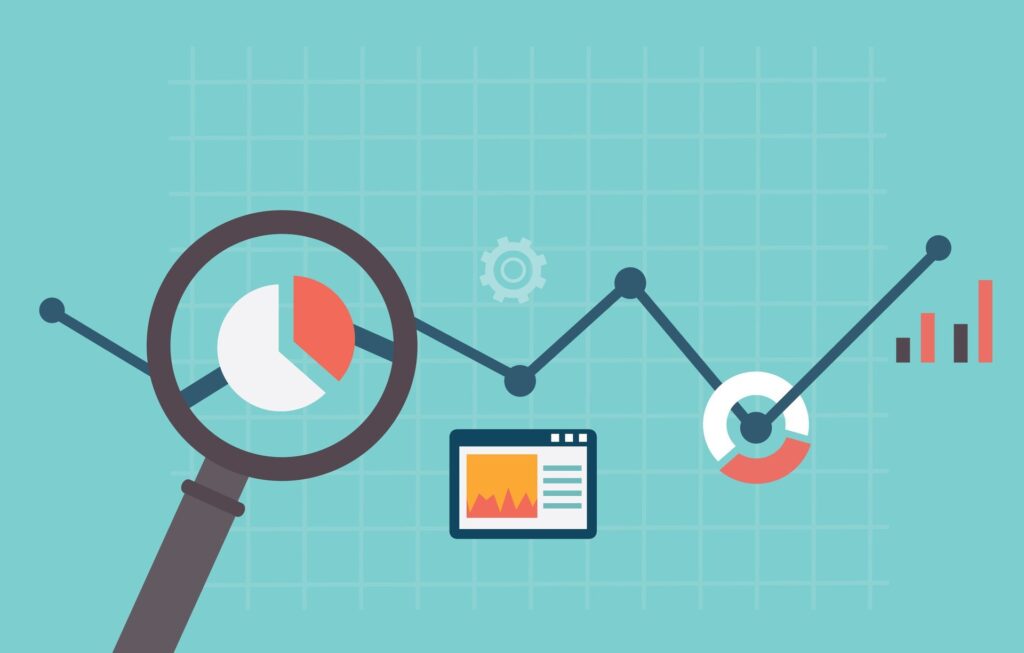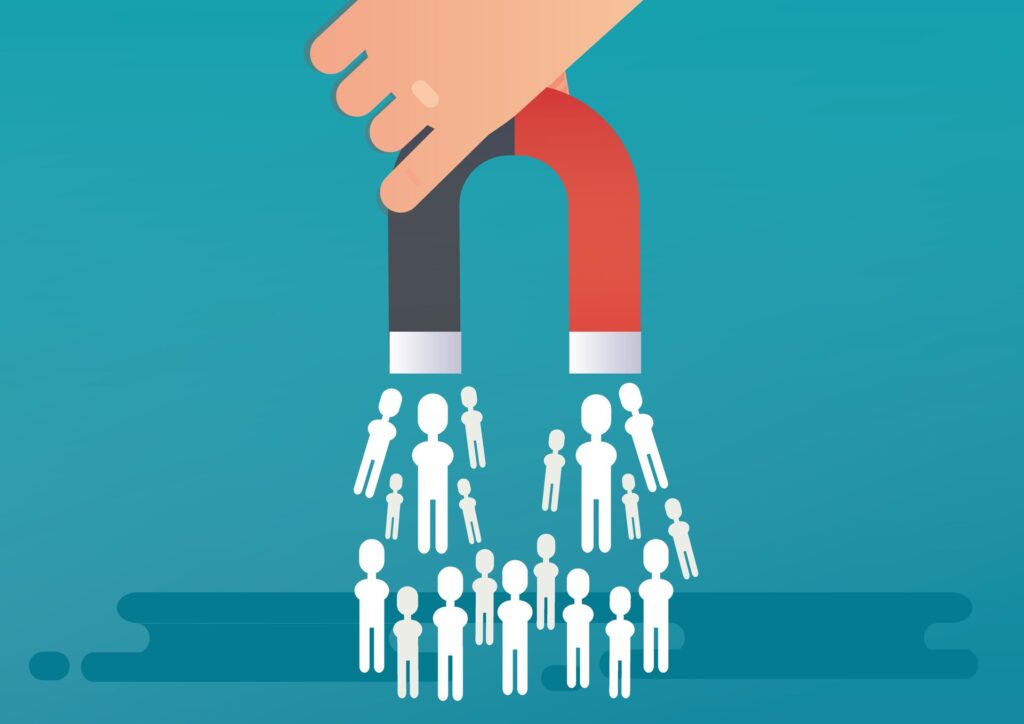It usually takes a lot of time to convince people to buy, unless you rely on impulse buying, aimed at selling as many products as is possible, either by presenting them, or organizing a tasting (MLM). Whatever industry you are in, your first move will usually be the creation of a Sales and Marketing Funnel.
What is a Sales Funnel?
It has been defined as a multi-stepped, modality process that transfers prospects into buyers. From the onset, it is worth distinguishing Sales from a Marketing Funnel; the first will define the way your customer will travel through the customer journey to meet you at your selling point, whereas the Marketing Funnel will define the way you communicate your values and mission to the customers. In marketing terminology – it will create awareness and engagement with your brand.
Any type of funnel will define simple, short, steps that the customer needs to take to know you, to trust you and finally to purchase from you. Currently in marketing, we recognize a new way of creating interactions with the brands, the so-called Marketing Engine by some leading specialists. It refers to the social proof that appears to be the most influencing factor at any decision making stage for consumers, in opposition to our marketing efforts a few years ago when we were able to influence an audience by carefully crafted PR or advertising strategies. Today, more trust lies in real people’s voices, opinions and ranks. Thus, marketing efforts have shifted to authentic social interactions with audiences, and social media are on the top of the marketing agenda of 90% of organizations. To make life easier, and to be able to measure the results, many marketers still rely heavily on a Sales Funnel model.
A Sales Funnel consists of a few stages for consumers to follow.
TOFU (top of the funnel) – Awareness Stage
This is the part of your market where unaware consumers live. They do not know your brand and have had nothing to do with it. This is the stage where your aim is to raise brand awareness, gain some interest, create a curiosity gap and introduce your product or service. It is not the time to sell anything. It is the time to make people realize that they have a problem and need a solution. It is the stage to create the first step of a relationship with your customers. Usually, companies use a few tools and techniques to attract new prospects. One is to generate some free form of helpful content, known as Lead Magnets. There are many shapes and sizes when it comes to Lead Magnets, the most common being: checklists, e-books, quizzes, reports, video tutorials, instructions, infographics communicated by Facebook Ads, blogging or media content. In terms of techniques, valuable are the creation of pop-up’s for websites, fan pages and utilizing mailing systems such as MailChimp, MailerLite, or those more advanced as Infusionsoft or Salesforce, to gather leads and insights.
This stage is great for any introductory webinars, live videos or Insta Stories. They usually help your customers to identify their issues and create basic interest in your brand. Poles in the UK are usually interested in practical, yet not expensive solutions; they are very sensitive to price, quality and social proof. At this stage, from All 4 Comms’s experience, we know valuable insights are gained that allow us to predict social trends, adaptability of certain products, and to craft ethnic marketing communications for this share of the market.
MOFU (middle of the funnel) – Opinion and Consideration Stage
Once prospects are aware of your brand’s existence, values and mission, and they are interested in your products, they will fall into the MOFU category. They know your brand, but they are not ready to buy your product yet. At this stage you have to convince them that indeed you have a certain solution for their problems and desires and it represents the best value for them, backed-up with your authentic, yet solution driven story. What works best for this stage is some reassuring content, such as e-books, case studies or industry rank; show them how you can solve their problem, focusing on the benefits and results, while involving the consumer’s emotions in the process.
At this stage you can offer free trials, discounts, money back guarantees to start motivating prospects to make a purchase. Also, this is a very good stage to create comparisons and industry reports. This is the stage when segmenting your audience into different chunks of the market will be very important. You can either choose targeting them according to their location, gender, interest, or buying path. Ideally, at this stage, you would consider creating segments that involve their needs, interests, and stage of the problem to be solved. It is worth asking your audience what they expect, whether there is anything you can do for them; add some additional proof that you have the relevant solution for their specific problem. This is the time to create highly targeted offers, e-mails, content, landing page.
BOFU (bottom of the funnel) – Preference and Sales
This stage is your prospect’s decision making stage and your main goal is to convert them into a paying client, to motivate them effectively to take this final step- click or pick up the product and buy. At this stage they are expecting product or service related content with some social proof supporting your expertise or product’s features. It should be solution oriented content, dynamic, emotional, a stimulating call to action. Some people will respond to motivational content such as sense of urgency to protect family or remove wrinkles to look younger and more attractive, while some will be more sensitive to special price offers. The techniques used by All 4 Comms to target Polish consumers include: re-marketing, videos, valuable expertise or report creation, interviews, Facebook posts and ads, Instagram posts.
What comes after a funnel?
This is the time to captivate the customer, keep them, and make them advocates of your brand, and followers on social media. They need to be engaged, they will expect useful, meaningful and relevant content. This is the time for referral offers, upselling offers, replenishment offers; for creating loyalty and buzz about your product. It is time to ask for reviews, testimonials. To inform your customers about new products it is worth using newsletters and updates to keep them excited about the brand they use. At this stage you can use loyalty schemes, for instance: points, or cards, contests and giveaways.
As Sales Funnel metrics we use:
- Quantitative metrics – the volume of sales, the number of conversions, win rate.
- Qualitative – measuring the level of awareness and interactions with the brand.
As interactions with brands are changing, some specialists have drawn our attention to the customer lifecycle that is not usually linear, and therefore a Sales Funnel is not relevant. If the funnel is considered as a flat structure of a customer’s journey, then both the marketing and sales departments are responsible for building a customer’s loyalty and taking advantage of data analytics and dialogue with consumers, which is possible on a daily basis due to the technical revolution and social media development.
In All 4 Comms, we interact with both; the prospects by keeping them informed and excited about the brand, and the clients who have already purchased the products from a diversity of sectors. We can turn any website into a company mission statement, engage audiences on social media, and support a brand’s expertise in traditional media. Our core strengths are over 11 years of experience and insights, which allows us to tailor marketing communications relevant for any stage of a Sales Funnel. We are probably the only agency specializing in international communication strategies for international brands that are targeting Polish customers all over the world.
If you are looking for a reliable agency to introduce your brand to Polish customers at any stage of your customers’ journey, do not hesitate to contact us.

